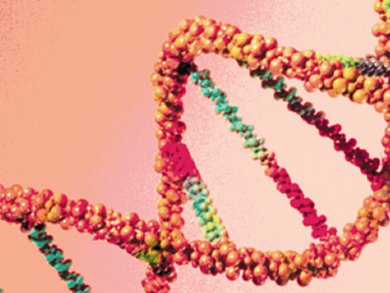Cees Dekker, Iwijn de Vlaminck, and colleagues, Delft University of Technology, The Netherlands, have discovered a key element in the mechanism of DNA repair.
In Escherichia coli, a filament of RecA protein formed on DNA, searches for the similar sequence and pairs a sequence within a second DNA molecule with remarkable speed and fidelity. To do so, individual molecules of RecA first come together to form a filamentous structure on the broken DNA. The filament then grabs DNA molecules in its vicinity and compares their sequence to the sequence of the broken DNA. When a sequence match is found, both molecules bind tightly to one another allowing repair to ensue.
It was found that the filament’s secondary DNA-binding site interacts with a single strand of the incoming double-stranded DNA during homology sampling. Recognition, the key step in the process, is achieved upon binding of both strands of the incoming DNA to each of two DNA-binding sites in the filament.
The team developed a unique new instrument that makes it possible to independently manipulate an individual DNA molecule and an individual RecA filament and to measure the strength of intermolecular interactions. This dual-molecule manipulation instrument combines magnetic-tweezer and laser-trapping-based DNA-molecule manipulation with a laminar flow system. The setup also allowed to unwind the DNA helix a bit, thus opening local regions where the normal duplex was destabilized.
- Mechanism of Homology Recognition in DNA Recombination from Dual-Molecule Experiments,
I. De Vlaminck, M. T.J. van Loenhout, L. Zweifel, J. den Blanken, K. Hooning, S. Hage, J. Kerssemakers, C. Dekker,
Molecul. Cell 2012.
DOI: 10.1016/j.molcel.2012.03.029




